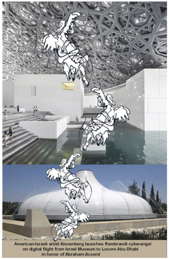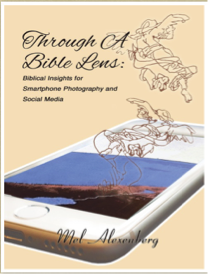The Ten Sephirot as Suggested by Mel Alexenberg
Keter
The first stage in the creative process is the sephirah Crown (Keter)—the will to create coupled with faith that one can create, and anticipation that the creative process is pleasurable. Without this intention, self-confidence, and hope for gratification, the creative process has no beginning. (Through A Bible Lens (pp. 77-78). Elm Hill. Kindle Edition.)
Halacha of awareness
Hokhmah
Crown sets the stage for the sephirah of Wisdom (Hokhmah) that requires a selfless state, nullification of the ego that opens gateways to supraconscious and subconscious realms. When active seeking ceases, when consciously preoccupied with unrelated activities, when we least expect it, the germ of the creative idea bursts into our consciousness. This sudden flash of insight is what the kabbalah calls Wisdom. Through A Bible Lens (pp. 77-78). Elm Hill. Kindle Edition.
Binah
Like the sperm that is received by the ovum in the womb, the unformed germ of an idea from the sephirah of Wisdom enters into the sephirah of Understanding (Binah).
Together, Wisdom, Understanding, and Knowledge form the cognitive realm of thoughts. Knowledge both unites Wisdom and Understanding and is the gateway to the next six sephirot that form the affective realm of emotions. Through A Bible Lens (p. 79). Elm Hill. Kindle Edition.
Hesed
The fourth sephirah of Compassion (Hesed) is openness to all possibilities. I thought of the hundreds of artistic options open to me in creating computer angels and I loved them all.
Through A Bible Lens (p. 79). Elm Hill. Kindle Edition.
Gevurah
Compassion is counterbalanced by the fifth sephirah of Strength (Gevurah), the strength to set limits, to make judgments, to choose between myriad options. Through A Bible Lens (p. 79). Elm Hill. Kindle Edition.
Tiferet
The sixth sephirah of Beauty (Tiferet). This sephirah represents a beautiful balance between the counterforces of Compassion and Strength. It is the feeling of harmony between all my possible options and the choices I had made. Beauty is the aesthetic core of the creative process in which harmonious integration of openness and closure is experienced as deeply felt beauty. Through A Bible Lens (pp. 80-81). Elm Hill. Kindle Edition.
Netzah
The seventh sephirah of Success (Netzah) is the feeling of being victorious in the quest for significance. I felt that I had the power to overcome any obstacles that may stand in the way of realizing my artwork. Netzah can also mean “to conduct” or “orchestrate” as in the word that begins many of the Psalms. I had the confidence that I could orchestrate all the aspects of creating a multimedia symphony of computer angels arising from the bowels of New York City. Through A Bible Lens (pp. 81-82). Elm Hill. Kindle Edition.
Hod
The eight sephirah of Splendor (Hod) is the glorious feeling that the final shaping of the idea is going so smoothly that it seems as effortless as the splendid movements of a graceful dancer. The sephirah of Success is an active self-confidence in contrast with the sephirah of Splendor, which is a passive confidence born of a trust in Divine providence that “all will be good.” It is the power to advance smoothly with the determination and perseverance born of deep inner commitment. It is the wonderful feeling that all is going as it should. CREATIVE INTEGRATION
Through A Bible Lens (pp. 81-82). Elm Hill. Kindle Edition.
Yeshod
The ninth sephirah of Foundation (Yesod) is the sensuous bonding of Success and Splendor in a union that leads to the birth of the fully formed idea. It funnels the integrated forces of intention, thought, and emotions of the previous eight sephirot into the world of physical action. In Chronicles 1:29, this sephirah is called All or Everything (kol). It channels everything that was playing out in my mind into the craft of making the artwork. It transports my private mental world into a public environmental arena in which I can create a product to communicate my ideas to others. Through A Bible Lens (pp. 81-82). Elm Hill. Kindle Edition.
Malkhut
This tenth sephirah of Kingdom (Malkhut) is the noble realization of my concepts and feelings in the kingdom of time and space. It involves all the practical details that go into physically making an artwork. Through A Bible Lens (p. 82). Elm Hill. Kindle Edition.







